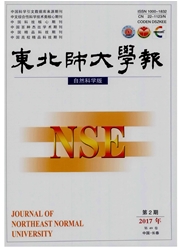

 中文摘要:
中文摘要:
采用水培实验,以松嫩平原南部的芦苇(Phragmites australis(Cav.)Trin.exSteud.)为研究对象,探究了混合盐(NaCl和Na2SO4)、碱(NaHCO3和Na2CO3)胁迫对植株生长和物质生产的影响.结果表明,分株高度、各构件生物量和总生物量以及生物量分配均表现出不同程度的表型可塑性.表型可塑性遵循的规律性为:变异系数茎生物量为最大,无论是盐处理还是碱处理,大多数数量性状呈现相同方向的可塑性变化,即盐处理时呈先升高后降低的变化,在60mmol/L浓度时达最大值;而碱处理时呈逐渐降低的规律.碱胁迫对分株的抑制作用大于盐胁迫.分株的各构件生物量、总生物量与高度呈显著正相关,反映了盐、碱胁迫下芦苇生长与物质生产、分配的内在协调性及其适应机制.
 英文摘要:
英文摘要:
A hydroponical culture experiment of Phragmites australis (Cav.) Trin. ex Steud. was conducted to explore responses of plants in growth and hiomass production to salt-or alkali stress by mixing neutral salts (NaCl and Na2SO4) or alkali salts (NaHCO3 and Na2CO3). The data showed considerable phenotypie plasticity in the height of ramet,biomass of stem,leaf,leaf sheath and ramet, as well as biomass allocation,with different extent. The phenotypic plasticity followed some rules as follows:the coefficient of variation (CV) of stem biomass was the largest. Most quantitative characters displayed plastic responses in the same tendency. They increased first and then decreased with an optimum at 60 mmol/L salinity under salt stress while showed gradual decline under alkali stress. The negative effect of alkali stress on reed is larger than that of salt stress. There were positive relationships between each module biomass, ramet biomass and the height of ramet, suggesting the potential coordination of reed growth, biomass production and allocation and the mechanism of adaptation.
 同期刊论文项目
同期刊论文项目
 同项目期刊论文
同项目期刊论文
 期刊信息
期刊信息
